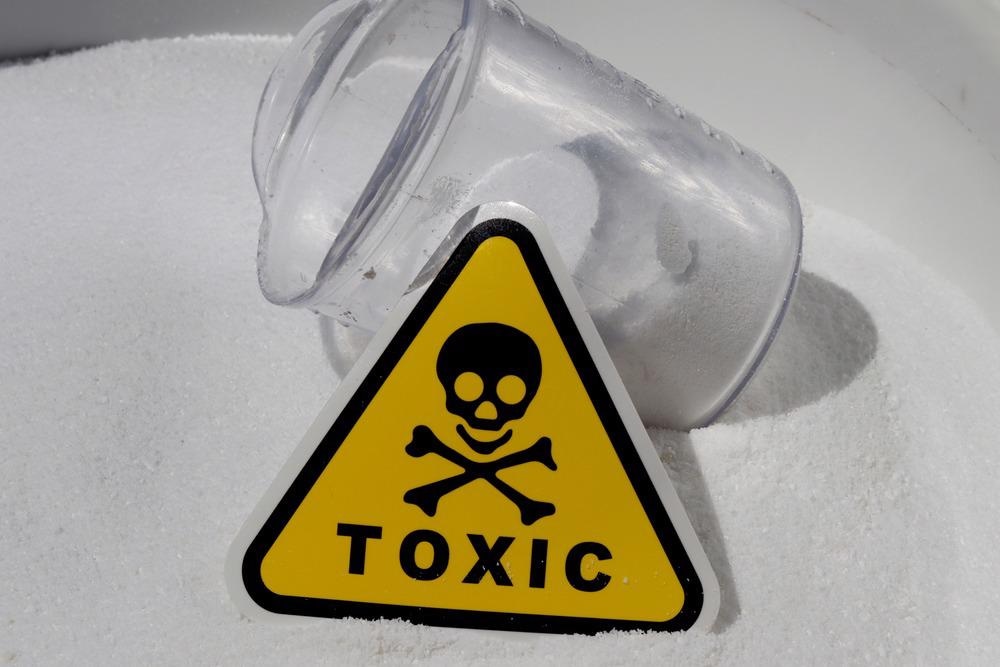Over the past several decades, nanotechnology advancements have led to the production of a wide range of nanomaterials engineered for clinical applications. However, researchers must study the toxicity and side effects of nanomaterials on human health.

Image Credit: Alex photohub/Shutterstock.com
Nanomaterials are often noted for their unique physicochemical characteristics, usually attributed to their small size, large surface area, chemical composition, solubility, shape, and aggregation.
Nanomaterials have been utilized across almost all industries. For example, metal nanoparticles are utilized in groundwater treatment and heavy metal removal, silica nanoparticles for electronic devices, and zinc oxide nanoparticles in industrial coatings to protect against the effects of ultraviolet (UV) radiation.
Regarding the clinical application of nanotechnology, silver nanoparticles are often used for their antimicrobial properties in biomedical applications.
What is Nanotoxicology?
Although most biological systems are equipped with innate and adaptive immune responses that protect themselves against invasion from foreign elements, nanomaterial exposure may result in undesirable side effects. Furthermore, the release of nanoparticles into the environment from use in specific industries can lead to ecological side effects that must be fully understood.
To address this, an emerging discipline, known as nanotoxicology, has set out to study the toxicity of nanomaterials in the human body. By definition, nanotoxicology explores the interactions that exist between engineered or incidental nanomaterials and biological systems.
While nanotoxicology is a relatively new field, it has since developed into a mature discipline that provides systematic knowledge for the risk assessment of nanotechnologies. As a result, it assists in the development of safer-by-design nanomaterials for medical applications.
Current Research in Nanotoxicology
One of the major applications of nanotoxicology can be found within the field of nanomedicine; it first emerged in the 1960s during the development of nanomaterial-based systems for controlled and targeted drug delivery systems. Despite their long history, only 50 nanomedicines have since been approved by the United States Food and Drug Administration (FDA), while an additional 77 are undergoing testing in clinical trials.
Some of the major challenges that limit the clinical application of nanomedical products include their low efficacy, often due to little understanding of nano-bio interactions. Concerns regarding nanomaterial biocompatibility, toxicity, and degradation are also key factors. Within the field of nanomedicine, researchers are primarily interested in overcoming these challenges to bring more effective nanomedical products to the clinic.
Studies in the area of nanotoxicology are focused on determining the concentrations of nanomaterials that can cause unintended side effects, including toxicity. Additionally, researchers are looking to make nanomedicines more specific and effective, as well as to figure out the lowest possible doses that can be given of these drugs, especially when used for bioimaging or diagnosis.
In addition to the applications of nanotoxicology within medicine, nanotoxicological studies have also become an important research focus of toxicologists. The release of nanoparticles into water, soil, and air can increase bioavailability and accumulation within human and animal food chains.
Regardless of what species the organism is, cells can readily internalize nanoparticles through either passive or active mechanisms; it is essential to understand the environmental impact of these materials to prevent negative effects.
Biocompatibility and Toxicity of Nanomaterials
A biocompatible material can perform its desired function without causing any undesirable local or systemic effects to its recipient. Comparably, toxicity refers to the ability of particles to adversely affect the normal physiological processes of the recipient, which can include disruption to the standard function of organs and tissues within humans, animals, or the environment.
For biomedical applications, the biocompatibility of nanoparticles and other ENMs can be classified according to their hemocompatibility or histocompatibility. The safety of nanomaterials within the blood, for example, is often conducted through the use of hemolysis.
Compared to the evaluation of nanomaterials’ biocompatibility, determining the toxicity of nanoparticles has proven to be a much more complex process that is still not fully understood. Much of this problem is derived from the ability of nanoparticles to bind to and interact with biological matter. This can lead to altered surface characteristics of the particles, depending upon what type of environment they are in.
Whereas classical toxicology is often categorized according to the dose metric, this methodology is not always appropriate when nanoparticles are considered.
As these materials often exhibit many more variables, including their size, shape, surface, charge, coating, and aggregation, to name a few, this can alter their toxicity profile.

Image Credit: Motortion Films/Shutterstock.com
The Industrial Role of Nanotoxicology
There remains a significant demand for nanomaterials in almost every industry ranging from agriculture and engineering to materials science and medicine. Nanomaterials offer a wide range of physicochemical properties that can be advantageous compared to the properties of their parent materials. However, they can also trigger severe consequences with use. It is essential that nanomaterials undergo distinct risk assessment processes that include an effects evaluation, exposure assessment, and risk characterization to limit such consequences.
An effects evaluation should include both in vitro and in vivo data that provides information on the estimated exposure value and how this compared to the administered concentration of the agent. Ultimately, the goal of these studies is to determine an exposure value in which no adverse effect was observed in the experimental research.
Secondly, exposure assessment should allow researchers to identify all potential sources of interaction with the nanomaterial. This step, therefore, requires the researchers to understand the full manufacturing process, as well as all possible routes of exposure. Collecting this information will assist in determining the appropriate testing strategy along with recommendations they should implement regarding risk prevention measures.
References and Further Reading
Pipergkou, Z., Karamanou, K., Basak, A., et al. (2016) Emerging aspects of nanotoxicology in health and disease: From agriculture and food sector to cancer therapeutics. Food and Chemical Toxicology, 91; 42-57. Available at: https://doi.org/10.1016/j.fct.2016.03.003
Ganguly, P., Breen, A., & Pillai, S. C. (2018). Toxicity of Nanomaterials: Exposure, Pathways, Assessment, and Recent Advances. ACS Biomaterials Science & Engineering 4(7); 2237-2275. Available at: https://doi.org/10.1021/acsbiomaterials.8b00068
Bondarenko, O., Mortimer, M., Kahru, A., et al. (2021). Nanotoxicology and nanomedicine: The Yin and Yang of nano-bio interactions for the new decade. Available at:Nanotoday 39. https://doi.org/10.1016/j.nantod.2021.101184
Polonini, H. C., & Brayner, R. (2015). Nanoecotoxicology: The State of the Art. Nanotechnologies in Food and Agriculture. Available at:https://doi.org/10.1007/978-3-319-14024-7_13
Li, X., Fan, Y., Feng, Q., & Ciu, F. (2012). Biocompatibility and Toxicity of Nanoparticles and Nanotubes. Journal of Nanomaterials. Available at:https://doi.org/10.1155/2012/548389
Zielinska, A., Costa, B., Ferreira, M. V., et al. (2020). Nanotoxicology and Nanosafety: Safety-by-Design and Testing at a Glance. International Journal of Environmental Research and Public Health 17(13); 4657. Available at: https://dx.doi.org/10.3390%2Fijerph17134657
Disclaimer: The views expressed here are those of the author expressed in their private capacity and do not necessarily represent the views of AZoM.com Limited T/A AZoNetwork the owner and operator of this website. This disclaimer forms part of the Terms and conditions of use of this website.